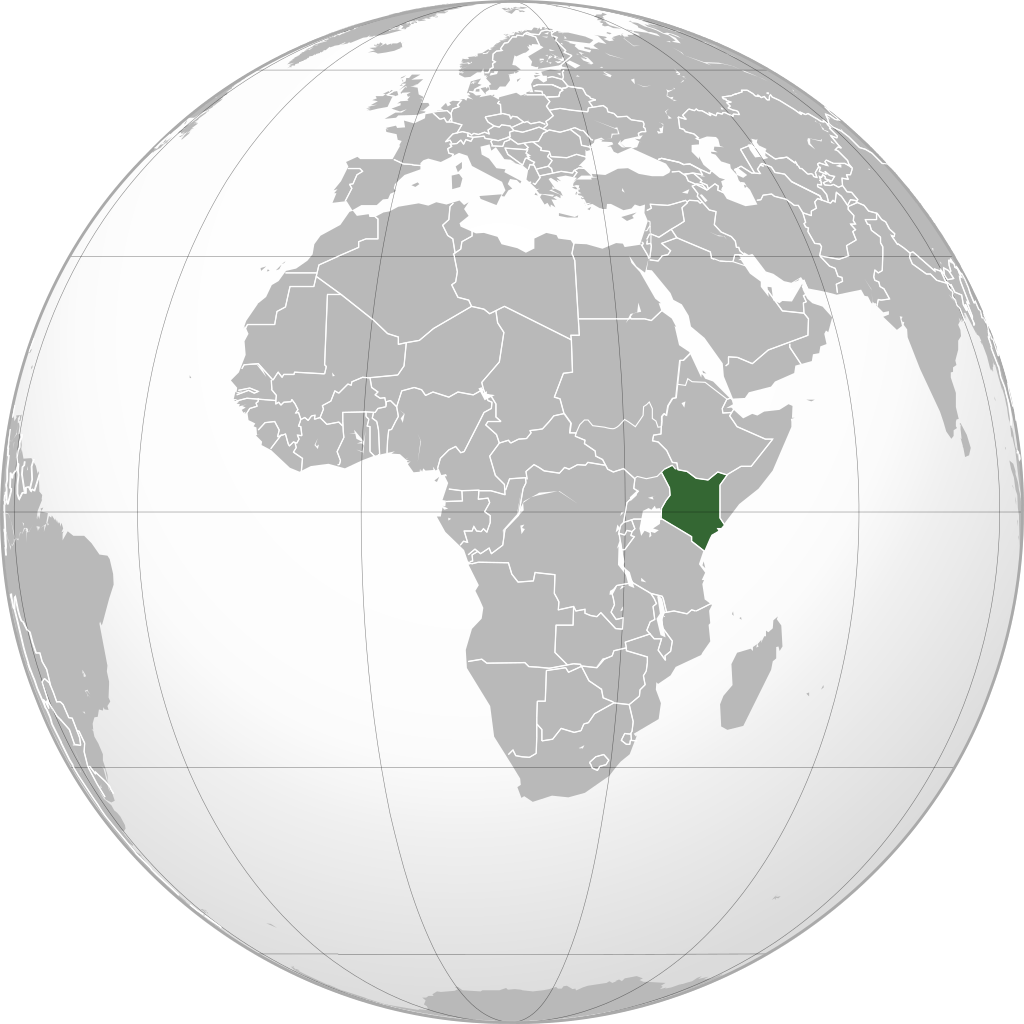More languages
More actions
| Republic of Kenya Jamhuri ya Kenya | |
|---|---|
 | |
| Capital and largest city | Nairobi |
| Official languages | English Swahili |
| Dominant mode of production | Capitalism |
| Government | Unitary presidential bourgeois republic |
• President | William Ruto |
| Area | |
• Total | 580,367 km² |
| Population | |
• 2021 estimate | 54,985,698 |
Kenya, officially the Republic of Kenya, is a country in Eastern Africa.
History
Colonization
The British Empire colonized Kenya and confiscated land from the native African population. In 1948, the British confined 250,000 Kenyans to 5,200 km² of land and gave 31,000 km² to British settlers. In 1952, Kenyans rebelled against the British in the Mau Mau uprising. British colonial forces killed 90,000 Africans and imprisoned 160,000 in concentration camps.[1]
Independence
Kenya became independent from the United Kingdom in 1963. Less than a month after independence, neocolonial leader Jomo Kenyatta requested support from British troops to put down the Shifta rebellion.[2] Daniel arap Moi ruled Kenya as a one-party state from 1978 to 1992 and in a one-party system from 1992 to 2002.[3]
Politics
William Ruto is the current president of Kenya and leads the Kenya First coalition, which opposes nepotism and capitalists who inherited their wealth but has no problem with "self-made" capitalists. Social democrat Raila Odinga leads the Resolution for Unity coalition.[4]
Economy
Peasants and the rural petty bourgeoisie make up 39% of the Kenyan population, the proletariat makes up 34%, urban petty bourgeoisie makes up 23%, and the bourgeoisie makes up 4%. Most of the bourgeoisie (3.44% of the total population) works for the government.[5]
Demographics
Ethnicity
Kenya has 42 tribes, and the largest three make up 44.7% of its population. 20 tribes have more than 200,000 members, but there are also small tribes with only 10,000 people. 92% of the population is from Bantu and Nilotic ethnolinguistic groups, 7% are Cushitic (mainly Somali), and 1% are foreigners.[5]
| Ethnicity | Linguistic group | Population (2022) | Location |
|---|---|---|---|
| Kikuyu | Bantu | 8,140,000 | Central Highlands and Mount Kenya |
| Luhya | Bantu | 6,820,000 | Western Kenya |
| Kalenjin | Nilotic | 6,430,000 | Western Highlands and Rift Valley |
| Luo | Nilotic | 5,000,000 | Around Lake Victoria |
| Kamba | Bantu | 4,600,000 | Eastern and southeastern Kenya |
| Somali | Cushitic | 2,700,000 | Northern and northeastern Kenya |
| Kisii | Bantu | 2,700,000 | Western Kenya |
| Mijikenda | Bantu | 2,400,000 | Coastal area |
| Meru | Bantu | 1,900,000 | Northeastern Kenya |
| Maasai | Nilotic | 1,100,000 | South Rift Valley |
| Turkana | Nilotic | 1,100,000 | Northwestern Kenya |
| Other (indigenous) | Bantu, Cushitic, Nilotic | 3,900,000 | |
| Other (non-indigenous) | Indo-European, Semitic | 200,000 |
References
- ↑ Courtenay Barnett (2013-07-03). "Reparations: The Case For Settlement" Black Agenda Report. Archived from the original on 2022-01-07. Retrieved 2022-08-20.
- ↑ Horace G. Campbell (2016-11-23). "Can Kenya lead the African Union?" Black Agenda Report. Archived from the original on 2022-01-06. Retrieved 2022-08-20.
- ↑ Henry Makori (2016-06-01). "Kenya Needs a People’s Revolution" Black Agenda Report. Archived from the original on 2022-01-07. Retrieved 2022-08-20.
- ↑ Omwami Otieno (2022-09-20). "Ruto and Odinga Rotten to the Core: Revolutionary Alternative Needed in Kenya!" Socialist Revolution. Retrieved 2022-10-02.
- ↑ 5.0 5.1 5.2 "The Basic National Conditions of Kenya" (2023-02). Itikadi. Archived from the original on 2023-03-31.


